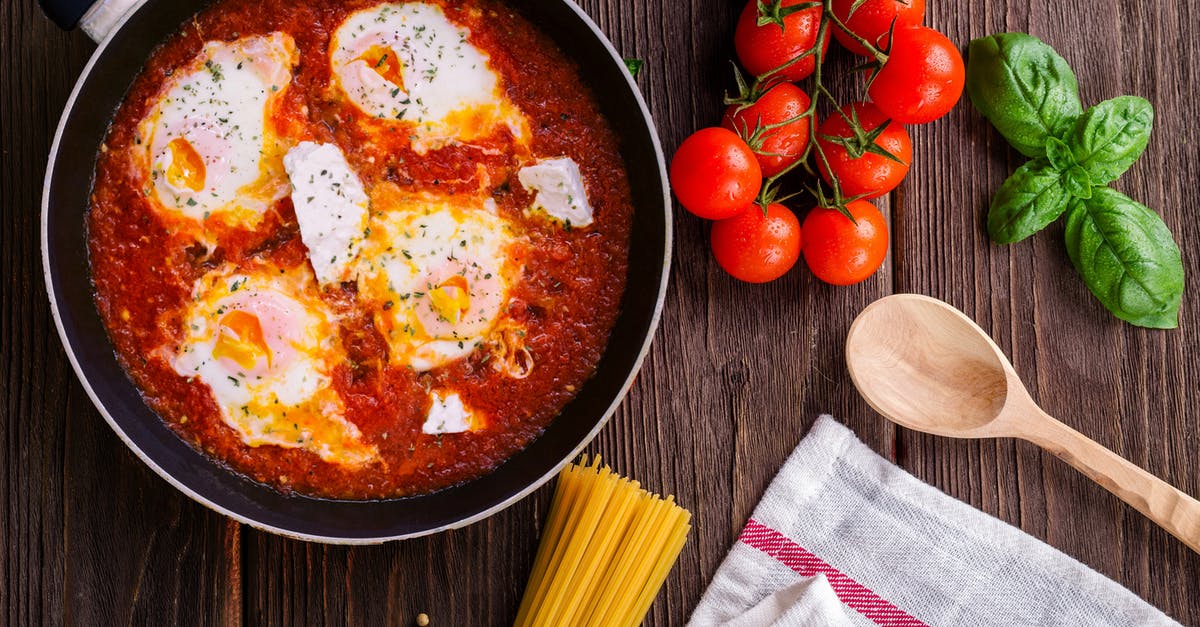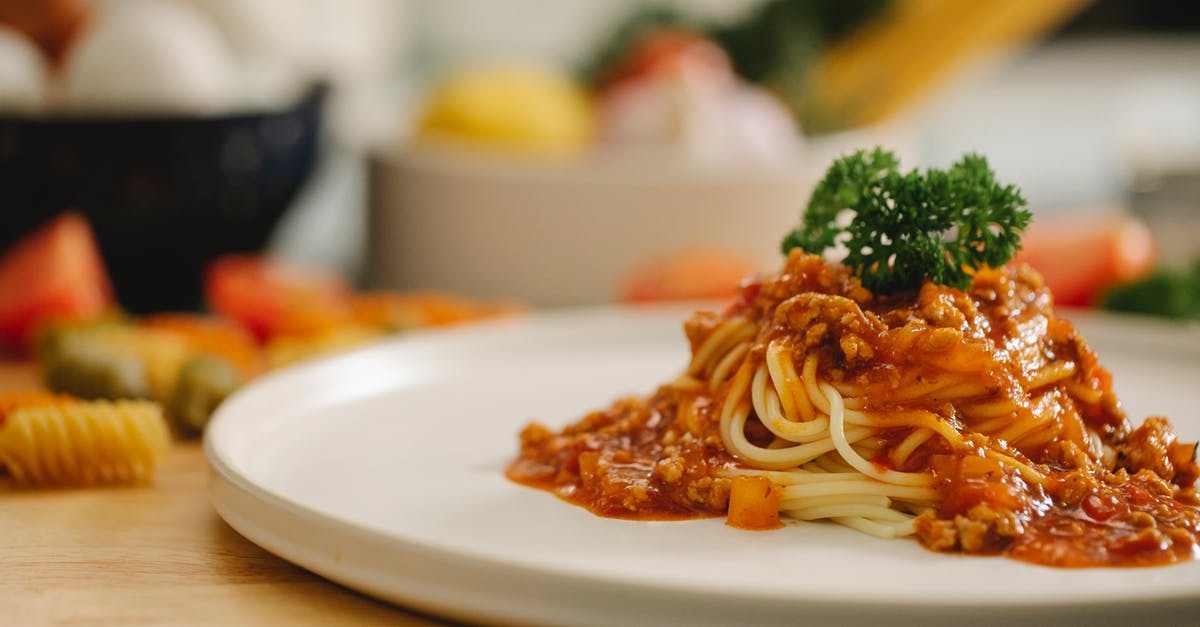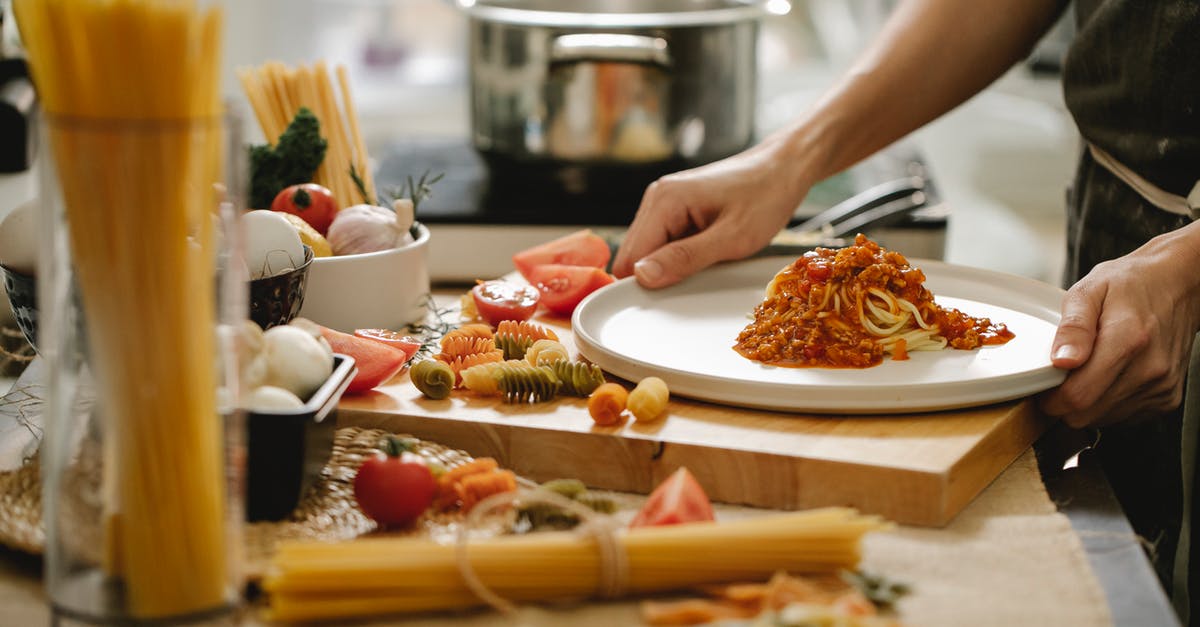How do I thicken tomato-based pasta sauce without adding starch?

I like to cook from scratch and I like to make my tomato-based pasta sauce (marinara) by cooking fresh tomatoes with herbs etc. However, the cooked tomatoes are always too runny for my taste and lacking the thickness that jarred supermarket alternatives do add to the pasta.
I have tried cooking the sauce longer to get more water to evaporate but never was able to reach the "processed" level of consistency/thickness. I am familiar with other forms of thickeners, such as roux or corn starch, but I'd rather not add starch. Is there another thickening agent I could use in my home-cooked marinara sauce?
Best Answer
Fresh tomatoes are insanely watery, so you're starting at a pretty big disadvantage here. Trying to fix it with a thickening agent alone might not be the best plan.
That said, if you want a short answer: use tomato paste, whether homemade or storebought. It'll thicken and improve the flavor. Watery tomato sauce usually has watery flavor, not just watery texture, so any way you thicken besides tomato paste is likely to leave you with a thick sauce that still lacks flavor somewhat.
First off, try to make sure you're using more pasty less juicy tomatoes. It's hard to give very specific advice since this depends a lot on exactly which varieties you get. But everyday supermaket tomatoes are generally too juicy, with the plum tomatoes often (but not always) being somewhat better.
From there, the most common options leave something to be desired:
- Remove some of the juice before cooking. This costs you some flavor, though.
- Cook longer to reduce the sauce. This costs you the fresh tomato flavor.
- Puree the sauce, so that the pulp gets spread around and thickens the liquid. This doesn't fix everything, but it helps a bit. You get this for free with longer cooking and reasonably small chopping, but you can also use a food mill, or grate the tomatoes, or find another way to thoroughly smash them.
So the best option, if you're looking for a totally fresh tomato sauce might be something like:
- Make your own paste (nice and thick and rich). It's easiest to reduce without burning in the oven, but you can do it in a pot too with some care. This is the time-consuming part, but if you do it in bulk, maybe not so bad.
- Make your own quickly-cooked puree (so you keep the fresh flavor as much as possible). If you have a food mill you can save a lot of time here by just hacking up the tomatoes and bringing them to a boil as fast as possible and cooking for 5-10 minutes, then using the food mill to get the skins and seeds out.
- If you want chunkiness, either mix in some fresh tomatoes just before serving, or if you want the chunks cooked, accept that you'll need more paste to make up for their water.
- Add paste until it's thick enough.
Then since that's all a bit time-consuming, you can save time by buying paste (it's cheap and easy). If you don't have a food mill, peeling and seeding is kind of a pain if you're making larger quantities, so you might consider just chopping reasonably finely and tolerating the skin and seeds.
There's a much longer writeup, "How to Make the Best Tomato Sauce From Fresh Tomatoes", of essentially this technique with an awful lot more attention to detail at Serious Eats. I personally find the lazier versions to be a better balance of time spent and resulting sauce quality, but you might think it's worth it.
Pictures about "How do I thicken tomato-based pasta sauce without adding starch?"



Quick Answer about "How do I thicken tomato-based pasta sauce without adding starch?"
How can I thicken tomato sauce without cornstarch?
6 Ways to Thicken Sauce Without CornstarchHow can I thicken a sauce without flour or starch?
7 Ways To Thicken Sauce Without FlourHow do you make sauce thicker without adding anything?
Cornstarch or arrowroot Cornstarch and arrowroot are gluten-free alternatives to thickening with flour. They'll also keep your sauce clear and cloud-free. You'll need about 1 tablespoon for every cup of liquid in the recipe. Mix the cornstarch with equal parts water to create a slurry and pour it into the pot.Can you thicken sauce without cornstarch?
Cornstarch is used to thicken liquids in a variety of recipes such as sauces, gravies, pies, puddings, and stir-fries. It can be replaced with flour, arrowroot, potato starch, tapioca, and even instant mashed potato granules.How to Thicken Spaghetti Sauce
More answers regarding how do I thicken tomato-based pasta sauce without adding starch?
Answer 2
Cascabel has already given a thorough answer, but I'd like to offer some advice about reducing the sauce.
Any time you are trying to get rid of liquid, you want as much surface area as possible. As suggested in Cascabel's answer, you can reduce the tomatoes in the oven on shallow baking trays (and if you're doing a larger quantity this is definitely the way to go), but if you are doing it on the stove top, use your widest frying pan, not a sauce pan or stock pot with tall sides. You will need to stir to make sure the parts on the bottom are not sticking and burning (baking tends to avoid this for the most part by giving a much more even heat, although the pan will generally get hotter than the contents).
Reduce the sauce before you season it. Cooking for a long time to reduce the liquid will be hard on most herbs and spices you may use. Also, if the flavor is balanced when the sauce is watery, it will no longer be when it is reduced. I would start with gently frying any onions (and garlic) until translucent then add the tomatoes and reduce it from there. If you are including meat or if you include other vegetables that you don't mind being cooked to unrecognizable mush, things like bell peppers or mushrooms can join in the reducing stage, too, just add them with the tomatoes. But get it to the desired consistency before seasoning it.
Answer 3
Grated parmesan or romano cheese helps thicken it.
Answer 4
First blanch tomatoes in boiling water and cold shock them in ice water, then peel/rub off skins. Next, squeeze skinned tomato to release excess water. That water can be saved to reduce or added later to loosen the sauce. Put solids in another pot. Process the seeds out using a tomato grinder if you have one. Heat crushed tomatoes slowly, you could even use the oven uncovered and forget it, except to peek, for 4 to 5 hours.
Sources: Stack Exchange - This article follows the attribution requirements of Stack Exchange and is licensed under CC BY-SA 3.0.
Images: Lisa, Dana Tentis, Klaus Nielsen, Klaus Nielsen
